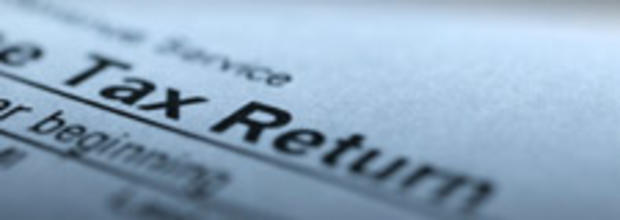Cut Your Taxes: 5 Lessons from Your 2010 Return
This article was updated on April 15, 2011.
So your 2010 taxes are done. Congratulations! But you're not done yet. (Sorry.) While you have all your 2010 tax forms and documents handy, this is the perfect time to analyze last year's finances and use those insights to lower your taxes in 2011 and beyond.
The sooner you get started, the more you can save. So, take a big breath and then take these five steps:
1. Avoid a Big Tax Refund
You think you love getting a tax refund. What’s not to like about found money? But a refund is really just the return of a year-long, interest-free loan that you extended to your spendthrift Uncle Sam. Even with interest rates in the toilet, earning some money is better than none at all, right?
You can do much smarter things with that money, like putting it into a retirement plan or a college savings fund, or maybe paying down outstanding debt. So if you will be receiving a 2010 refund of more than a few thousand dollars and you’re an employee, adjust your withholding at work. If you’re self-employed, lower your quarterly estimated tax payments accordingly.
2. Save More in Your Retirement Plan
If you are not maxing out your employer-sponsored, tax-deferred retirement plan, you’re missing out on the single best opportunity to save on taxes.
I know that the idea of saving more may be difficult, especially as the costs of gas and food are soaring. But if you can squeeze just an extra 1 or 2 percent out of your paycheck and pour that cash into the plan, you’ll reduce your taxable income and your 2011 tax bill. In other words, Uncle Sam will help you save!
Doing so might also bring your income under certain thresholds that will let you qualify for bigger tax breaks you’d otherwise miss — such as personal exemptions, itemized deductions, an Individual Retirement Account, theChild Tax Credit, the Child and Dependent Care Credit, and the American Opportunity Tax Credit.
Here’s an example, courtesy of Research401k.com: Say you’re a single person earning $50,000 and in the 25 percent tax bracket. Without making a 401(k) contribution, you might owe $12,500 in taxes this year. By contributing $4,000 to the plan, however, you’d lower your taxable income to $46,000 and might owe $11,500 in taxes. Essentially, the government lends you $1,000 to invest for your future and you don’t have to pay the loan back until you withdraw the money from the 401(k) in retirement.
3. Look into Muni Bonds and Funds
If you have money in interest-paying bank accounts, CDs, money market funds, or taxable bonds or bond funds, you could be adding to your tax liability. High-income taxpayers need to be especially concerned, since their tax liability could rise with the 2012 expiration of the Bush-era tax cuts.
You may want to consider moving some of those taxable savings and investments into tax-free municipal bond funds. (Yes, those same bonds that Meredith Whitney trash-talked on 60 Minutes.) Since that time, investors have been bailing out of municipal bonds, fearing that states, towns and municipalities could default on their obligations. That exodus has forced prices down and yields up.
Clearly, you need to be careful about the bonds and bond funds you select, but with munis yielding more than Treasury bonds, now could be a good time to test the waters. I’m a fan of funds from Vanguard (VWITX), T. Rowe Price (PRTAX), Charles Schwab (SWNTX) and Fidelity (FLTMX).
If you are in a high tax bracket, muni funds could offer a better tax-exempt yield. To see how much more in your case, use this taxable-equivalent yield calculator. Just be aware that the sweet yields on munis come with some extra risk, since there’s a real possibility that some bond issuers won’t make their payments. Historically, that risk is pretty slim, but we are in a new period where defaults could occur.
4. Lower Your Mutual Fund Taxes
Now that stock and bond markets have recovered from their bear-market lows, be on the lookout for mutual fund taxable distributions. A distribution is one of the most aggravating features of a managed mutual fund: You are on the hook for capital gains on the fund’s investments as well as the fund’s tax liability. You may even be taxed on gains the fund incurred before you owned it!
One way to limit the damage before you invest is to ask the fund company if it will be making a distribution soon. If the answer is “yes,” hold off buying until afterward.
Or you might invest in funds with low turnover ratios, such as index funds, since they’ll be less likely to throw off taxable distributions. A turnover ratio below 10 percent is generally tax-efficient. (A fund’s annual report will show its turnover rate.) Morningstar’s Fund Screener tool can help you find low-turnover stock funds.
One class of mutual funds, tax-managed funds, is all about keeping your tax liability down. These funds do so by keeping turnover low and avoiding dividend-paying stocks. Some tax-managed funds own stocks; some own stocks and bonds. Morningstar and Yahoo! Finance’s Mutual Funds Center can help you find them.
5. Keep Better Tax Records
Organizing your tax records might not only lower your tax liability, it could help you get rid of the tax-filing headache sooner. Create a file called “Taxes 2011” and throughout the year toss all your paperwork into it: business receipts; bank, brokerage, and mutual fund statements; W-2s; 1099s; property tax bills; and mortgage interest statements. Also keep track of your purchase price, commission, and sales price for any investment transactions in 2011. You’ll thank yourself in April 2012.
While you’re in the organizational mode, now is the perfect time to purge your files of unnecessary statements and documents. Get the shredder fired up!
More on MoneyWatch:
